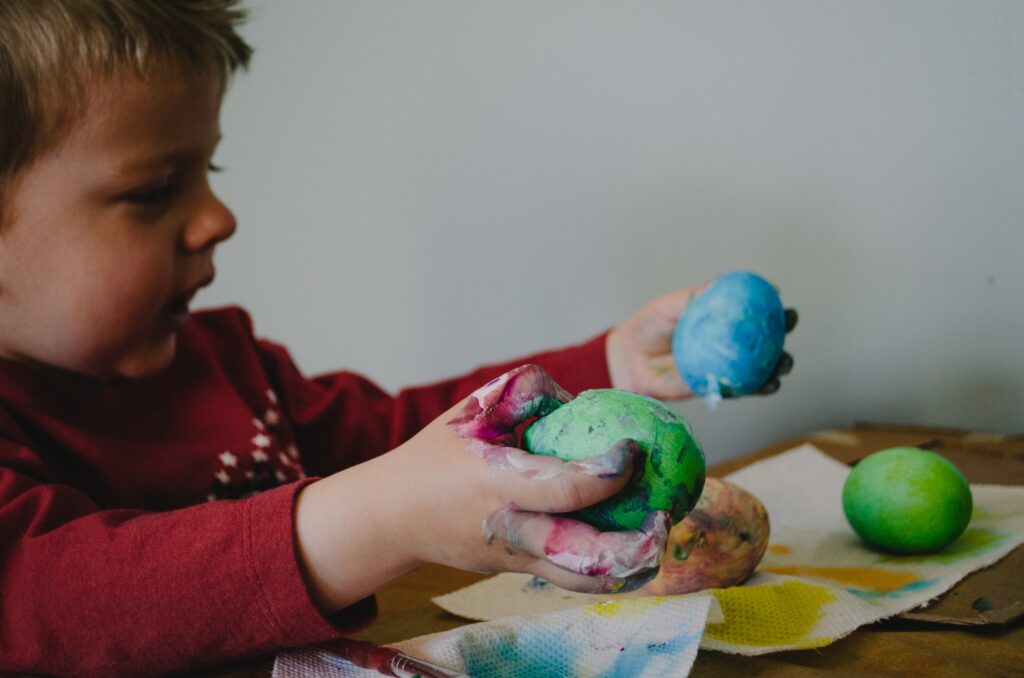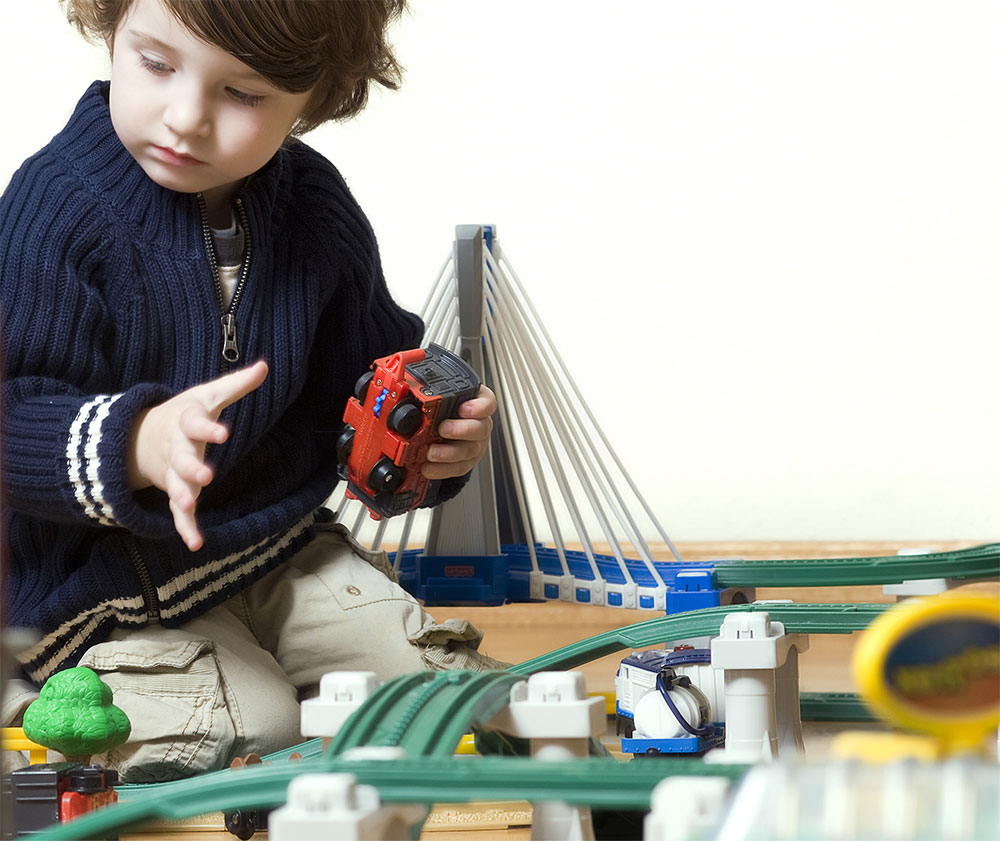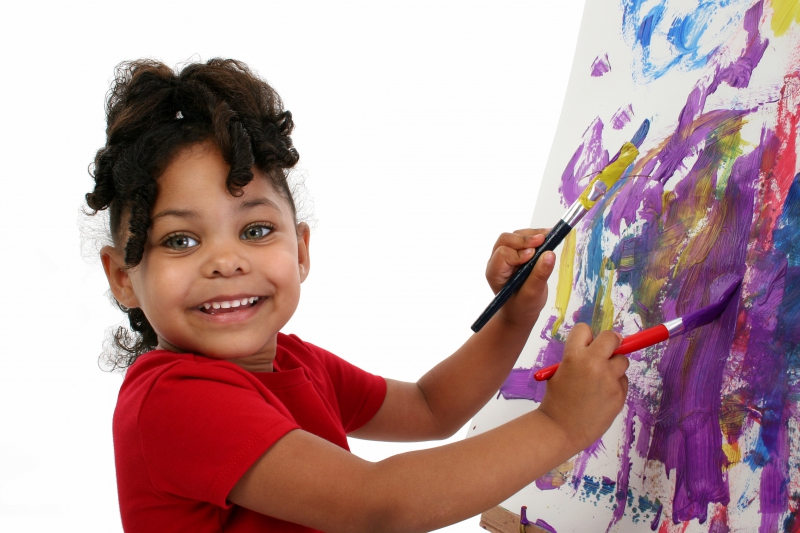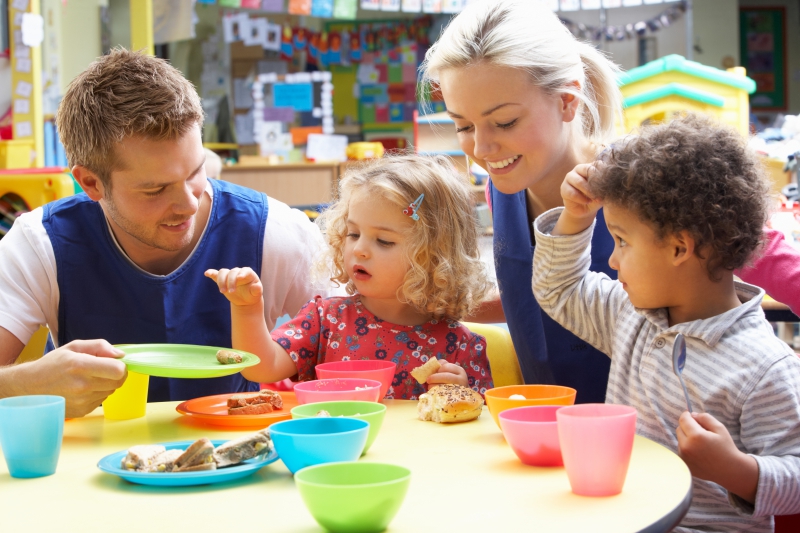Quality Preschool, Infant and After School Programs
3-Year-Old Skills

As a 3-year-old, your toddler is learning so much and growing in so many ways. At Adventures in Learning, we format each day to meet your child’s needs and provide the guidance they need to thrive, focusing on every part of their development in a holistic way. While this list is just a sample of some of the skills we work on at our Tustin or Orange daycare center, it should give you a good idea of what to expect — as well as what you can do at home to continue supporting your child.
Take a look at how Adventures in Learning tailors education to your child’s growth, and schedule a tour with our daycare center today!
Physical
- Coordinate large muscles, as in balancing, running, jumping, hopping, throwing, kicking and catching a ball, and riding a tricycle.
- Coordinate small muscles, as in painting with a large brush, making balls and snakes with clay, holding a crayon with fingers rather than fist, cut across paper with scissors (not snipping) and putting 10-15 piece puzzles together. Don’t expect your child’s work to be picture perfect. His joy and interest in cutting and coloring are much more important than the finished product.
- Begin to draw human figures (usually head and legs).
- Eye hand coordination (ability to string beads or lace following a sequence of holes).
- Ability to copy horizontal lines, vertical lines, circles, cross, diagonal line.
- Ability to trace letters.
- Zip and unzip.
Self Help Skills
- Dress self with guidance.
- Pour from a small pitcher.
- Assume simple responsibilities.
- Follow simple directions.
- Participate in clean up time.
- Feeds self.
- Willing to taste new foods.
- Share toys and treats.
- Skills communicating with other children and adults.

Social & Emotional Skills
- Ability to follow two step directions (put your hands on your head and walk to the door).
- Ability to make decisions and choices.
- Ability to make friends and begin to play cooperatively.
- Can attempt to resolve own conflicts with words.
- Exercises self control.
- Share toys and treats.
- Skills communicating with other children and adults.
- Ability to work independently.
- Ability to work in a group.
- Say goodbye to Mom and Dad and switch focus to a task.
- Develop affectionate but not clingy attachments to friends and teachers.

Language and Literacy
- Speak in 4 to 6 word sentences.
- Take an active part in conversations.
- Uses present progress verb (He is jumping) and past tense (He walked home).
- Uses correctly: I You Me He She.
- Understand and ask simple questions using: Who What Why Where.
- Identify at least 10 familiar objects when asked.
- Understand gender (boy/girl).
- Ability to describe action in a picture (The girl is combing her hair).
- Ability to memorize and repeat finger plays or songs.
- Understand same and different.
- Understand opposites (up – down, stop – go, fast – slow, open – close, etc.).
- Understand spatial relationships (over, on, top, in front of, above, etc.).
- Enjoys listening to books.
- Asks questions about books.
- Answers questions about books.
- Identify own name in print.
- Matches letters.
- Tracking from left to right on a printed page or teaching easel.

Cognitive Development
- Recognize basic colors.
- Recognize basic shapes.
- Rote counts to 10.
- Recognizes 4 to 5 numerals.
- Count 3 to 5 objects.
- Understand the concept of “one”.
- Match colors.
- Categorizes objects.
Phonics will be introduced using ZOO-PHONICS®

Sample Daily Schedule
The following is a sample daily schedule for all preschool age children. Please refer to posted schedules and weekly lesson plans in classrooms for the specific times and planned activities.
In addition to the lesson plan activities, there will be various activities set up during outside time as well. For example, you may find that your child did some wet chalk coloring outside, helped make play dough or played a game of duck-duck-goose.
- 6:30-8:00 a.m.: Free Play & Breakfast
- 8:00-8:30 a.m.: Story Time
- 8:30-9:00 a.m.: Playground Time
- 9:00-9:15 a.m.: Snack
- 9:15-9:30 a.m.: *Group time (roll call, calendar, introduce theme and Zoo Phonics letter/sound of the week, story and songs)
- 9:30-10:45 a.m.: *Language Arts (Zoo Phonics, *Creative art,*Cognitive / Structured Learning,*Manipulatives and Free Play)
- 10:45-11:45 a.m.: Playground Time (Outside Learning Centers)
- 11:45 a.m.-12:30 p.m.: Lunch
- 12:30-2:30 p.m.: Naptime
- 2:30-3:45 p.m.: *Music and Movement, *Science and Discovery
- 3:45-4:00 p.m.: Snack
- 4:00-4:45 p.m.: Playground Time (Outside Learning Centers)
- 4:45-5:30 p.m.: Free Play inside/Table Activities
- 5:30-6:00 p.m.: Classrooms combine for story time
*LESSON PLAN ACTIVITIES
